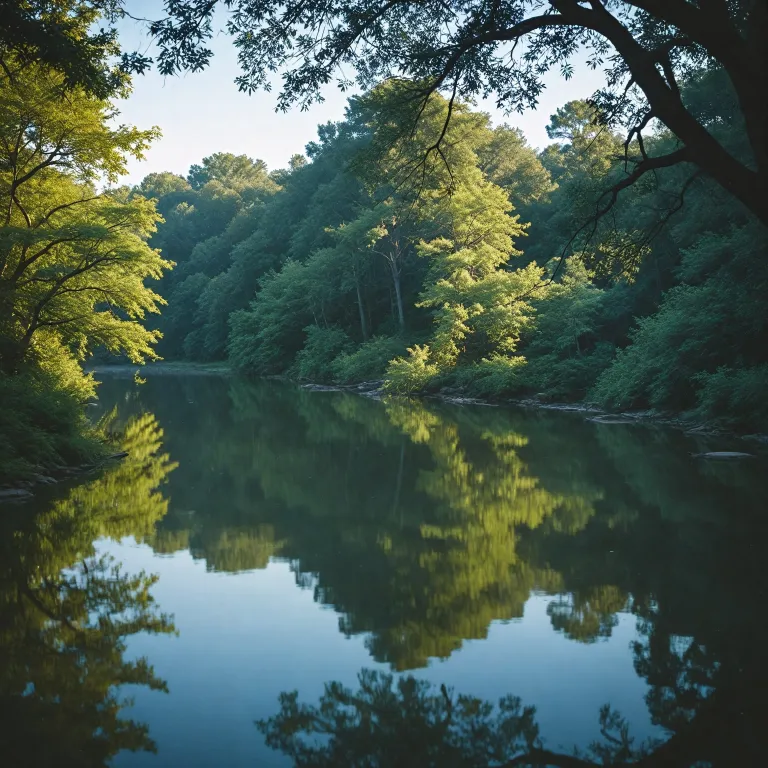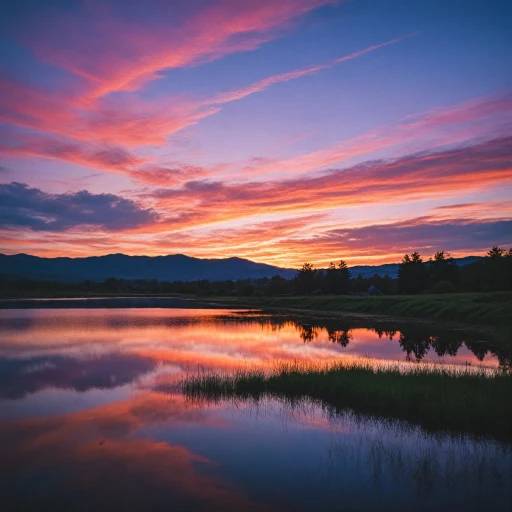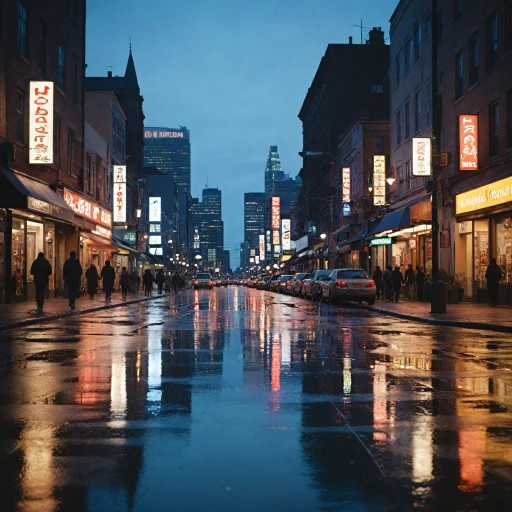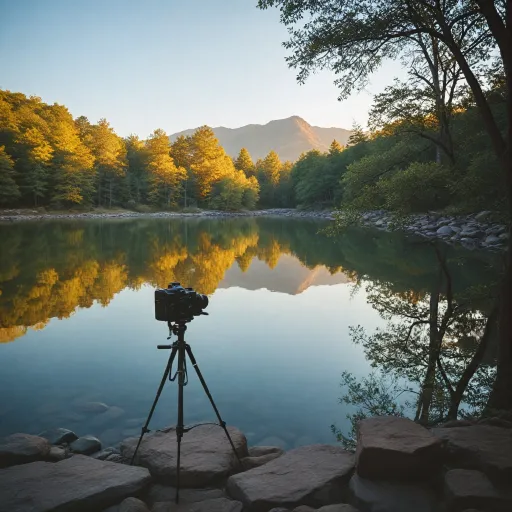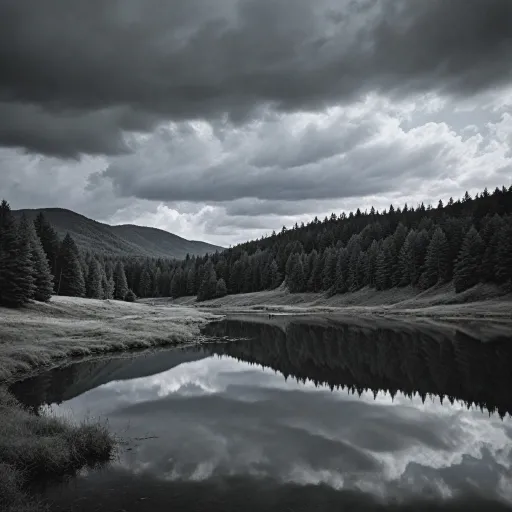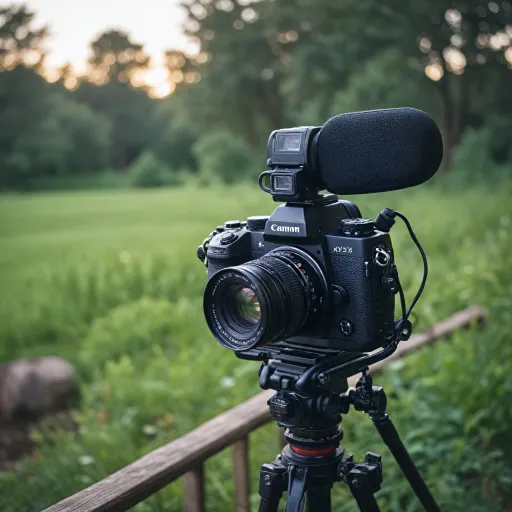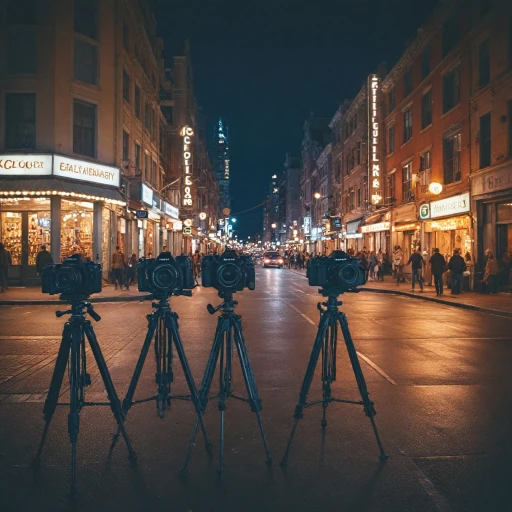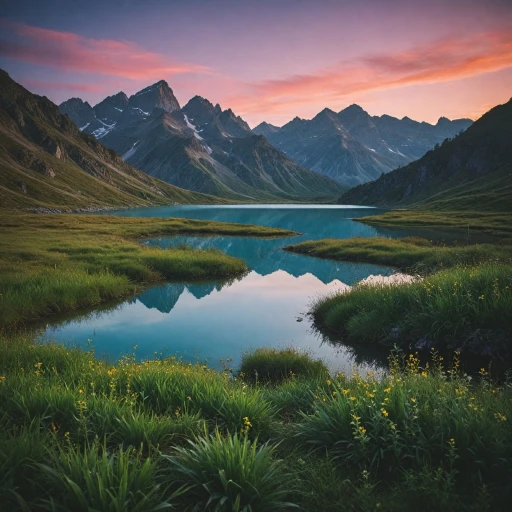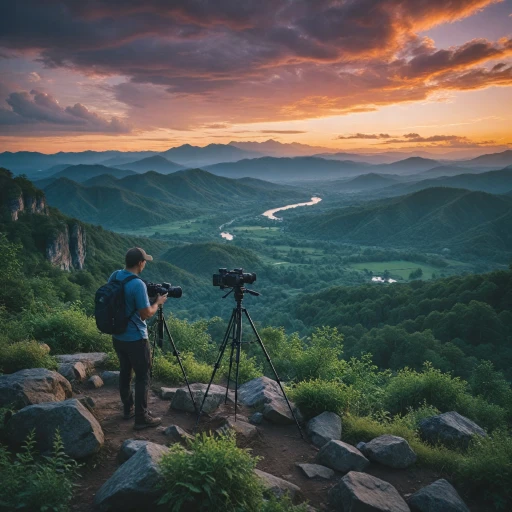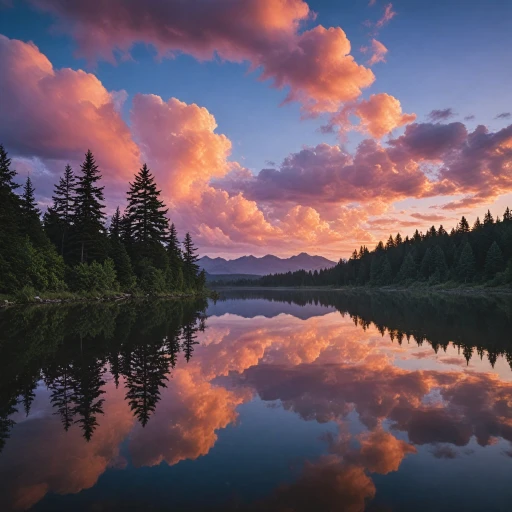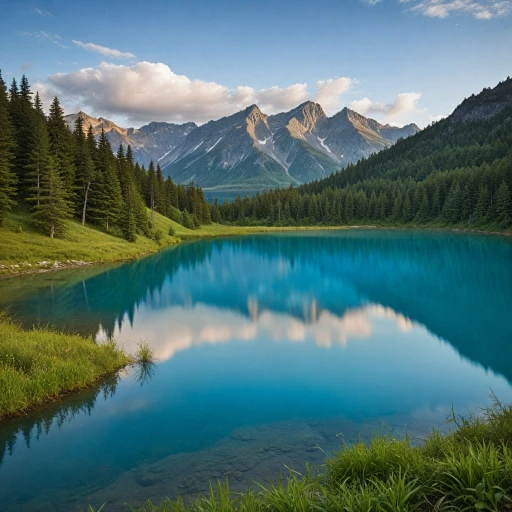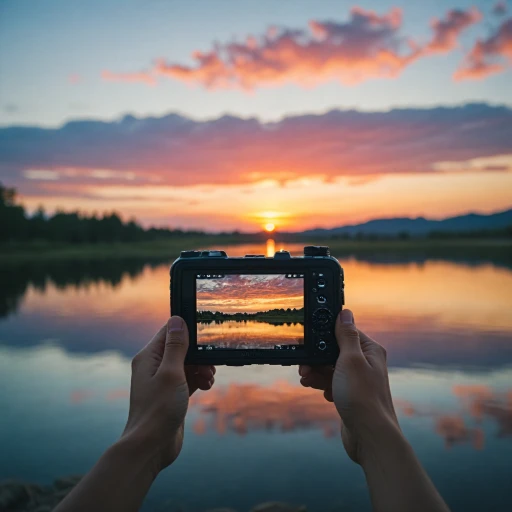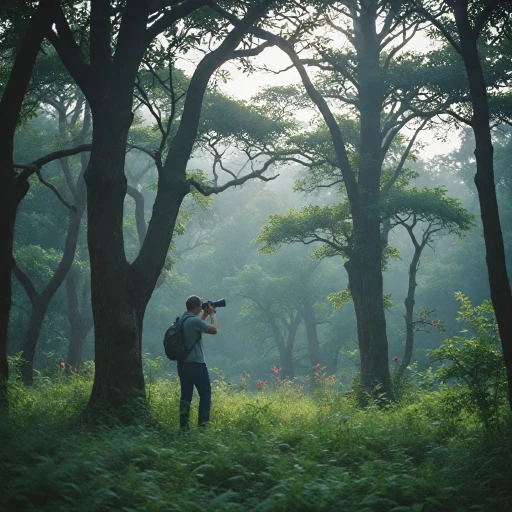
Understanding Pinhole Cameras
The Basics of Pinhole Photography
In the realm of traditional photography, the pinhole camera stands out for its simplicity and uniqueness. It leverages a concept as old as photography itself—capturing light through a tiny "pin" hole onto a surface to create an image. This method offers a raw, yet captivating, approach that brings out the essence of vintage photography.
A pinhole camera operates without the use of a camera lens. Instead, it relies on an aperture made by a small pinhole, which allows light to pass through and project an image onto a surface opposite the hole. This process is reminiscent of the camera obscura technique, where light is funneled through a small opening to form an image inside a darkened room or box.
This technique is steeped in history, dating back to the very foundations of photography. Yet, it still manages to intrigue and captivate photographers today, offering a blend of art and science. It's a method that is accessible to anyone willing to explore the fundamentals of light and shadow and has a certain charm that appeals to those who appreciate alternative photography practices.
Pinhole photography can result in images that have a unique quality, often featuring a soft focus and a dreamy aesthetic. The absence of a lens means that there is no distortion typically introduced by glass or plastic lenses, leading to pictures with a distinctively different and sometimes surreal character. These images can create a vintage feel, often reminiscent of early black and white photography.
For those new to this form of photography, it can serve as a useful entry point to the world of photography, providing a deeper understanding of exposure and composition.
Creating Your Own Pinhole Camera
Crafting Your Own Vintage Pinhole Camera
Creating a pinhole camera is a rewarding journey into the roots of photography. This simple device, often referred to as a camera obscura, allows you to capture images without the need for a lens. Instead, a tiny pinhole projects light onto a surface, creating an image. The process is not only educational but also offers a unique perspective on how light and exposure work together to create photos.
To start, gather basic materials: a light-tight box or container, aluminum foil, black tape, and a piece of photographic film or photo paper. The box serves as the camera body, while the foil will be used to create the pinhole. Carefully puncture a small hole in the foil with a pin or needle, ensuring it's as round and smooth as possible to produce clear images.
Assembling Your Camera
Once you have your materials, follow these steps:
- Line the inside of the box with black paper to prevent unwanted light reflections.
- Attach the foil with the pinhole to one side of the box, securing it with black tape to ensure no light leaks.
- On the opposite side, place your film or photo paper. This will be where the image is projected.
- Seal the box completely, except for a flap or cover that can be opened to expose the pinhole.
With your camera assembled, you're ready to explore the world of pinhole photography. Experiment with different exposure times by varying the duration the pinhole is uncovered. Long exposure times can create stunning, ethereal images, capturing the passage of time in a single frame.
For those interested in diving deeper into alternative photography techniques, consider exploring the fascinating world of aura photography. This can complement your understanding of how different photographic methods capture light and emotion.
Capturing Unique Images with Pinhole Cameras
Crafting Distinctive Imagery with Pinhole Technology
Pinhole photography is an art form that thrives on simplicity and patience. With no lenses involved, the process requires allowing light to pass through a tiny hole, or pinhole, to produce images on a photosensitive material like film or photographic paper. This long exposure technique results in unique photos that often exude a dreamlike quality. A defining characteristic of pinhole photography is its distinctive look. Unlike modern camera images, pinhole photos often display a soft, slightly blurred effect due to the lack of a focused camera lens. The resultant images can embody a "vintage" feel, harkening back to the days before digital cameras dominated the scene of photography. The charm of pinhole photography lies in its natural ability to capture the world with a soft curvature. Whether it’s the sweeping branches of a solitary tree or the hustle of a United States city street, images projected through a pinhole camera present a unique perspective. The photos often boast smooth gradations and extended depth of field, achieved through the pinhole's unrestricted framing and exposure to light. For those passionate about alternative photography, experimenting with pinhole cameras delivers a rewarding experience. It allows for stepping away from stock images and indulging in free artistic expression. You might find yourself experiencing a new dimension of light and shadow, refining your understanding of exposure times, and ultimately capturing images that challenge modern-day photography norms. Additionally, for contemporary photographers, pinhole techniques can seamlessly integrate with digital cameras, offering a creative avenue to explore. Interesting results can be accomplished by projecting a pinhole image onto a digital sensor. This intersection of vintage methods with modern technology can catalyze photographic innovation, especially in capturing breathtaking sunsets through unique filters. For more insights on enhancing such stunning scenes, check out this resource on enhancing sunset photography with reverse edge gradient ND filters.The Aesthetic Appeal of Pinhole Photography
Discovering the Charm of Nostalgia
Pinhole photography may seem like a relic of the past, yet the aesthetic appeal it offers cannot be underestimated. The allure of vintage pinhole images is akin to stepping into a time machine, as the photos transport viewers to an era long gone. But how does this work, exactly? The unique technique, similar to film's aesthetics, captures images with a soft focus. This slight blur adds a dreamlike quality to the pictures, reminiscent of early photography. These long exposure times create atmospheric and ethereal scenes, turning commonplace trees or street corners into stunning, otherworldly visuals.Embracing the Imagination Through Limitations
Unlike cameras fitted with sophisticated lenses, the pinhole is charmingly primitive. This simplicity offers photographers a refreshing break from the technical complexities often associated with modern devices. Not only does pinhole photography appeal to nostalgia, but it also encourages a discipline in crafting each shot. With exposure times that can stretch into the long minutes, and without the fancy frills of camera obscura techniques, patience becomes a virtue. This might be a challenge, but it's also a welcome invitation to slow down and take in the scenery moment by moment.Colors and Contrasts: The Enchantment of Black and White
Black and white images pinhole techniques evoke a particular aesthetic that modern digital cameras often strive to emulate. This minimalism strips photographs down to their basic elements, emphasizing the subtleties of light and shadow. These images, often associated with nostalgia in the United States, appeal because they provoke emotion and, paradoxically, a sense of timelessness. They might not compete with the stock image libraries in terms of vibrancy and clarity, but their charm lies within their imperfections. It's these imperfections that often speak volumes in capturing the essence of a scene.The Beauty of Unpredictability
Pinhole cameras are unpredictable. When you create a pinhole camera at home, your photos may feature light leaks or unexpected flares, adding to the vintage charm. Although some may see these as flaws, many alternative photography enthusiasts and vintage camera users celebrate these quirks. They give each photo a uniqueness that feels distinctly personal. Finally, pinholes allow photographers to celebrate the artisan skill needed to frame the perfect image. In a world of instantaneous gratification and perfection seeking, the raw aspect of pinhole images reminds us to appreciate simplicity and embrace serendipity.Integrating Pinhole Techniques with Digital Cameras
Blending the Old with the New: Pinhole Meets Digital
Integrating traditional pinhole techniques with modern digital cameras can offer a unique twist to your photography journey. While the classic pinhole camera provides a dreamy and often nostalgic look, utilizing digital technology can open up new creative possibilities. For photographers seeking to experiment with pinhole photography, modern digital cameras can serve as the perfect platform. With their advanced sensors and high resolution outputs, digital cameras can effectively simulate the softness and unpredictability of a traditional pinhole photo while allowing for real-time adjustments and previews. One way to achieve this fusion is through the use of pinhole body caps. These can be attached directly onto your digital camera, transforming it into a digital pinhole camera without the need for a camera lens. The result is a distinctively vintage look with the convenience of digital photography. Here are a few tips to get started:- DIY Pinholes: Crafting a simple pinhole attachment is a rewarding project. Use a piece of thin aluminum or brass to create your own pin to fit onto your camera's body cap.
- Long Exposures: Embrace longer exposure times as you capture images. This technique can result in beautiful blurs and ethereal effects, reminiscent of a classic pinhole image projected onto film.
- Black & White Impact: Consider experimenting with black and white hues to enhance the classic, timeless appeal of your pictures.
- Digital Adjustments: Utilize your camera’s settings to adjust exposure and ISO to compensate for the low light intake of the pinhole setup.
Showcasing Pinhole Camera Pics
Showcasing Your Pinhole Creations
The world of pinhole photography offers a treasure trove of unique and vintage images that captivate the imagination. These photos have an undeniable charm that often strikes a nostalgic chord, reminiscent of the early days of camera obscura and film photography. When you have captured your pinhole masterpieces, sharing them with others not only showcases your artistic endeavors but also inspires fellow enthusiasts to explore this fascinating technique. Displaying your pinhole images can be as creative as the process itself. Here are some pointers to consider:- Create an Online Gallery: Utilize platforms like Instagram or dedicated photography websites to display your pinhole pictures. These galleries serve as a free and accessible way for audiences worldwide, from the United States to beyond, to appreciate the unique beauty of long exposure and light effects intrinsic to pinhole photography.
- Participate in Exhibitions: Art galleries and photography expos often appreciate alternative photography techniques. Submitting your work to exhibitions can gain your pinhole photos more visibility and open opportunities for constructive feedback.
- Join Photography Clubs: Engaging with local or online photography clubs dedicated to vintage camera and pinhole enthusiasts can provide a community that appreciates and understands the aesthetic allure of pinhole camera images.
- Submit to Stock Photo Sites: While pinhole images might not fit every commercial need, they can find a niche in the stock photo market for projects seeking a vintage or artistic touch.
- Create a Blog or Portfolio: Document your process, experiments, and results. Blogs not only showcase your work but also act as educational resources for others interested in learning more about pinhole photography techniques.
